#far grasslands miner
Text

Ant Mines
Bug Fables NPC Collab [5/23]
Background - @motheatencrow
Editor - @flame-shadow
Character Credits
Diana - @kuoddo
Vivi - chibiscuit
Mine Overseer - enrique2205
Miner - enrique2205
Nessa/Sleepy Ant - @coozycoolz
Mystery Ant - @flame-shadow
Golden Settlement Miner - jabbernabber
Far Grasslands Miner - @sts-puelle
Rubber Prison Miner - lamverykarpy
Forsaken Lands Miner - @milatheartsy
Metal Island Miner - jabbernabber
[click here to see the entire collection]
#bug fables#bug fables npc collab#art#id in alt#diana#vivi#mine overseer#miner#nessa#mystery ant#golden settlement miner#far grasslands miner#rubber prison miner#forsaken lands miner#metal island miner
50 notes
·
View notes
Text
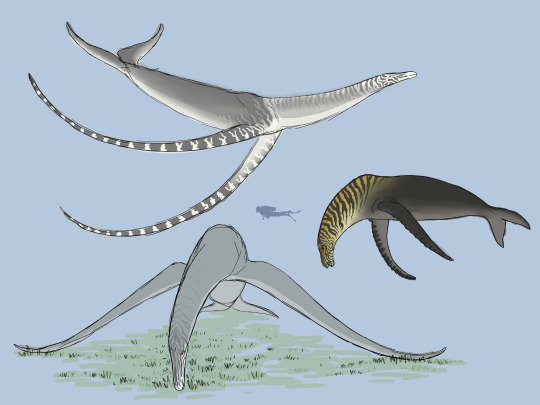
Some sketchy concept stuff that I'm posting because I liked it but couldn't be bothered to refine it into an actual artwork.
These submarine behemoths are the Mermares (Clade Euhippocampiformes), secondarily aquatic descendants of the domestic donkey. The group first appeared around 29 million years post-cataclysm, in the late Nerian stage of the Diluvian period. They evolved from an animal called the Seabra, a descendant of the Donkey which adapted to exploit a niche with, thus far, zero competition - that of a large marine herbivore.
On earth, marine ecosystems are notable for the distinct lack of vascular plant life, a condition caused by a number of factors - most notably the osmotic stress caused by the saltwater. Most photosynthesis is carried out by algae. On Spero, however, things are different. Because Spero's oceans were generated relatively recently, from extraterrestrial ice particles, there just hasn't been enough time for erosion and the water cycle to deposit dissolved minerals in the water. As a result, Spero's seas are made of freshwater - a much more tolerable condition for most plants, and thus the diversity of marine vascular plants is much, much higher than on earth. Also, due to the flatness of the flooded landscape and lack of any real tectonic features, enormous swathes of the seabed lie within the photic zone, less than 200 meters from the surface. Thus, endless expanses of marine grasslands - the "seagrass prairies" - extend from the shore, often for hundreds of miles before the water finally gets too deep for photosynthesis to occur.
All of this plant life is an extremely attractive prospect for herbivores, and it was likely what drew the ancestral Seabra to forage in shallow coastal meadows in the first place. But as the oceans got deeper and life adapted, the Seabra had to adapt in kind - their hind legs rotated backwards to act as a pair of propulsive flukes, their forelimbs developed into steering flippers, and their nostrils retreated to sit on their foreheads.
One notable feature of the Mermares is hyperphalangy, a condition where the fingers have too many bones. It's very common in large marine tetrapods in Earth's history - whales and dolphins, Ichthyosaurs, Plesiosaurs, and Mosasaurs all exhibited hypoerphalangy to some degree - and seems to be associated with the specialization of the limbs into flippers. We would expect to see similar patterns in marine lineages on Spero. What's unique about the Mermares, however, is the sheer number of extra phalanges in the finger; at least fifteen in the shorter-finned species, and more than thirty in the longest-finned forms. And because Mermares - being equids - only possess one digit per limb, the result is a single long chain of flat, squarish bones which, in some cases, can reach over forty feet long - the longest arms ever to exist.
These ridiculous appendages produce a lot of drag and are merely adequate for steering and stabilization. So why do the Mermares have them?
The answer is that they're weapons. And particularly devastating ones, at that.
Mermares use their flagellating flippers as bludgeons, against both predators and conspecifics. The flippers are connected to powerful neck muscles and can be swung forward with impressive force; combined with a well-timed twisting of the giant horse's torso, the huge flippers can impact hard enough to shatter bone and pulverize flesh. The flippers themselves do not escape unscathed, and older individuals often have scarred or mangled flipper-tips from numerous battles over the years; but it's a small price to pay for survival.
When not being used against their enemies, the flippers may be folded back against the sides of the animal to reduce drag, or used as props to keep the animal's belly up off the seabed when feeding. Mermares spend up to 18 hours per day grazing, using their long neck to crop aquatic grasses and other vegetation in a wide arc without moving their bodies and occasionally dipping up to the surface to breathe. Mermares are keystone species in the seagrass prairies; as hindgut fermenters, they are not as efficient at processing plant matter as ruminants like goats, and produce large amounts of nutrient-rich dung which acts as fertilizer for the meadows and helps keep the environment productive. The dung also acts as food for a variety of fish and invertebrates.
Let's look at some of the Mermare's diversity, shall we?
Drepanarion (center right)
One of the smaller Mermares, Drepanarion nonetheless grows to nearly 12 meters (39 feet) long. It is immediately recognizable by the bold black-and-yellow striping on the heads and necks of the stallions, and by the tall, narrow nuchal crest which extends from the withers and makes the stocky body look even more powerful. Unlike most other Mermares, which live in small groups of less than ten individuals, Drepanarion can be found in herds of over a hundred in the seagrass prairies of the Savanian (41 - 50 million years post-cataclysm). These nomadic throngs graze patches of seagrass nearly to the roots before moving on, giving the ecosystem time to regrow before returning in a few years' time. Drepanarion exhibits the most extreme sexual dimorphism of any Mermare, with stallions being both larger and more brightly coloured than mares; during the annual rut, males will fight each other in brutal bludgeoning matches to establish dominance and secure mates. To this end, they have some of the most extreme flipper anatomy of any Mermare; though not especially long (indeed, they have the shortest flippers of any derived genera), each phalanx bone has a protruding bony tubercle on the anterior edge which extends into a keratinous knob. These knobs both protect the flipper during combat and focus the force of the blow into a smaller area, dealing more damage.
Hipposeidon (bottom left)
First appearing in the early Imberian (50 million years post-cataclysm), Hipposeidon is the largest of all Mermares and, indeed, the largest animal ever to exist on Spero, with stallions regularly reaching over 24 meters (80 feet) long (mares are slightly smaller). Extremely large specimens may even reach 30 meters (100 feet), although this is rare. This ludicrous size - nearly rivaling even the mighty Blue Whale of Earth - is possible only due to the sheer abundance of its food. Hipposeidon appears at the height of the seagrass prairie's extent, and can pack away almost 900 kilograms (1900 pounds) of seagrass per day. This superlative food requirement has important consequences for Hipposeidon's behaviour; this animal is migratory. Seagrass prairies are extremely productive ecosystems, but nonetheless Spero is a seasonal world; as the summer growth gives way to the winter die-back, the greatest of the Mermares must migrate across the equator to seek out a continuous food source to fuel its immense bulk. In this way Hipposeidon experiences a perpetual summer, interrupted only by the biannual migration from north to south and back again. Female Hipposeidon are pregnant for about one year, timing the birth of the single large foal with arrival to the feeding grounds; the six-meter-long foal enjoys a long childhood nursing and playing in shallow summer waters, gathering strength before making the long swim across the barren tropical zone to pastures new.
Bathypegasus (top left)
The last and possibly the weirdest of the great Mermares, Bathypegasus is the only member of the clade which is not a grazer. Instead, it is a specialist feeder on pelagic, free-floating ferns. These ferns are a seasonal bounty, growing in huge numbers in the tropical summers of the late Imberian (60 million years post-cataclysm), where the planetary ring system shades out large portions of the planet for half the year. A close relative of Hipposeidon, Bathypegasus has left its ties to the seabed behind, becoming a fast, powerful swimmer which spends most of its life far above the sea floor. Its flippers have adapted to be even more ludicrously long - the longest forearms of any animal, ever, with each one measuring nearly 14 meters (45 feet) in length and each containing at least 35 individual bones. No longer used to prop the animal up off the seabed, these whiplike flippers are narrow and streamlined and can be whipped through the water at speeds of nearly 20 meters per second (that's over 40 mph) - the most extreme weaponry of any Mermare, and used to great effect against predators. Bathypegasus, like Hipposeidon, is migratory, following the blooms of pelagic ferns across Spero's oceans. Thanks to this midwater diet it is the only genus of Mermare to survive past the mid-Imberian extinction, when rising sea levels and steepening coastal slopes caused the seagrass prairies to disappear. Bathypegasus finally died out in the Ultimoxerian stage, around 75 million years post-cataclysm, the last and weirdest of the giant marine horses.
#spec bio#spec evo#speculative biology#speculative evolution#Vicis Aeternum#Spero#seed world#equid#donkey#they're like if a whale and a horse had a baby and that baby was somehow also a diplodocus
860 notes
·
View notes
Text
FF7 Rebirth: All Region Intel
Wanted to make a way to easily access & read all the world/region intel you can get in Rebirth so here's a giant post for that. Everything below the cut.
GRASSLANDS
Kalm: A Recent History
This humble town serves as a transport hub for the grasslands, hence the distinctive bailey built for the monitoring of commercial and private traffic. During the war with the Republic of Junon, Shinra saw fit to occupy Kalm, due to its stout fortifications and strategic value, and it has remained under company control ever since.
As it lacks a reactor of its own, Kalm is reliant on Midgar and its pipelines for a steady supply of mako, which is stored in a large tank for regulated use. This arrangement allows the residents to enjoy both modern conveniences and a healthy environment—a combination that has attracted many new residents of late.
Ten years ago, a significant portion of the town was “damaged,” though Shinra quickly intervened and carried out a comprehensive reconstruction effort. Details regarding the incident and the extent of the destruction are sparse.
Flora and Fauna of the Grasslands
In stark contrast to the barren, mako-ravaged outskirts of Midgar, the ecosystem of the grasslands remains relatively unscathed. Streams flowing from the central mountain range nourish the lush meadows below, which sustain a diverse range of species. Ranchers and farmers also benefit greatly from this bountiful environment.
Vast wetlands make up much of the southern region. In days past, boats and chocobo carriages were a common sight, but as most goods are now transported by sea or air, traffic through the wetlands has steadily decreased. Moreover, as an immense, man-eating serpent dubbed Midgardsormr has been sighted in this area of late, few dare to brave the old trails. Even those capable of evading the gargantuan snake may yet fall victim to one of the many inescapable quagmires.
The Mythril Mine: Changing with the Times.
A natural passage through the mountains between Junon and the grasslands, this mine has long served as a rich source of mithril. The mineral boasts an exquisite shimmer and remarkable strength, and was historically used to fashion the very finest weapons and armor, but it fell out of favor after Shinra developed superior synthetic materials.
After the mine was closed, the Republic of Junon converted it into a tunnel for the general public, allowing travel to and from the grasslands. The glistening mithril deposits drew regular sightseers as well. Following Shinra’s triumph over the republic, however, the tunnel has been effectively abandoned. Various sections have fallen into disrepair, and the depths are host to untold dangers.
JUNON REGION
The Rise and Fall of the Republic of Junon
The people of Junon were once largely seafarers, who only returned to the shore to peddle the bounty of the ocean. Unlike other communities that settled in a single location and gradually expanded their territory, these sailors preferred the freedom of the open sea, and over time banded together with like-minded souls to form a unique society.
As a republic, they repurposed a flotilla of large vessels to construct a floating city that would serve as the center of their trade network. Having forged a robust infrastructure, they then set their sights on uniting the disparate peoples of the world.
Though Junon ushered in an era of economic and cultural prosperity, it was not to last. Shinra’s revolutionary mako technology put paid to their ambitions, and their once proud city now slumbers beneath the waves.
Junon: The Fortress City
Having conquered the Republic of Junon, Shinra constructed a nigh-impregnable fortress on the coast in the heart of their enemy’s former territory. Powered by the world’s only underwater mako reactor and equipped with a colossal cannon capable of firing as far as Wutai, the stronghold resembles a vast battleship, risen from the deep to defend the eastern continent.
Junon is a city composed of multiple levels, each of which is lined with uniform buildings that were originally designed to serve the needs of military personnel. After the war with Wutai, some were converted into hotels and retail outlets, and the arbor and airport now see a constant stream of civilian visitors.
Military exercises are still conducted frequently, however, and should the need arise, defense countermeasures can be deployed at a moment’s notice, transforming the city in to a fortress, ready to repel would-be invaders.
COREL REGION
Costa del Sol: A Recent History
Though Costa del Sol is now a renowned beach resort, it was once home to a string of humble fishing villages. However, when relations between Shinra and the Republic of Junon began to deteriorate, Shinra annexed this portion of the coast. After the war, the company designated the area for redevelopment, transforming it into the must-visit location for avid sunseekers that it is today.
Costa del Sol offers vacation packages to suit any budget, allowing travelers from every corner of the globe to savor the idyllic beaches. Plans that include a trip to the Gold Saucer have proven particularly popular.
Corel: A Tale of Decline
Coal was in high demand in the days of the republic, and the wealth of Mt. Corel drew miners from far and wide. Though the work was hard and dangerous, the laborers banded together to overcome their difficulties, forming a close-knit community in the process.
Alas, the advent of mako saw the price of coal plummet, spelling disaster for the people of Corel. As they struggled to find a way forward, Shinra proposed the construction of a mako reactor, and after much debate, the villagers accepted the offer.
The reactor was constructed with astonishing haste, but just prior to being brought online, it was torn apart by an immense explosion, and has been left in ruins ever since.
The Rise of the Gold Saucer
The tale of the Gold Saucer began with a Shinra employee named Dio, who convinced the company to build a museum called the Reliquary. Although it was doomed to failure, Dio was not to be deterred, and he set about founding the world’s largest theme park, which he first conceived as a small-scale fairground.
In the wake of the Corel Mako Reactor explosion four years ago, plans were set in motion to revitalize the local economy. Hearing this, Dio decided to relocate his fairground to the region, eventually transforming it into a state-of-the-art entertainment complex.
Now known as the Gold Saucer, it is powered by several modular reactors, which are responsible for the surrounding area’s accelerated desertification. In light of this, the reactors are now run at minimum output, in an attempt to mitigate further damage to the environment.
GONGAGA REGION
Gongaga: A Recent History
In ancient times, Gongaga was settled by descendants of the Cetra, who lived in quiet seclusion. The region was largely ignored by later kingdoms and empires, until the Republic of Junon thought to expand its influence westward. They soon discovered, though, that the expense of establishing trade routes through such dense jungle far outweighed the benefits of reaching the small communities there, and elected to instead construct an airstrip and little else.
When war erupted between the republic and Shinra, people the world over were impacted to varying degrees. Those in Gongaga were the rare exception, as being so far removed from the theater of war meant that they were not subject to forced conscription, nor were their villages ever host to the bloodshed.
Life in Gongaga
The village of Gongaga lies at the heart of the humid jungle, where many species of moss, fern, and mushroom thrive. Its people have a long tradition of self-sustenance, growing only enough produce and raising only enough livestock to support their collective. Though the village is by no means commercially enterprising, the Gongaga mushroom endemic to the region is renowned for its rich aroma, and commands a high price.
Gongaga’s fortunes took a turn for the worse following an explosion at the nearby mako reactor. Though much of the jungle was temporarily declared a disaster area, due to its elevation position, the village itself escaped the worst of the fallout—a small mercy considering the devastation wrought below.
The Gongaga Mako Reactor Incident
First generation mako reactors based on the one built in Nibel are prone to malfunction due to flaws in the pressurization system’s design. This, however, did not deter Shinra from installing them at various locations throughout the world, including Gongaga.
The company’s failure to follow their own inspection and maintenance procedures led to a disastrous explosion which claimed the lives of many villagers. Acknowledging its part in the incident, Shinra dedicated a monument to the victims.
This accident was not an isolated occurrence, though, as at least one other reactor is known to have exploded in a similar fashion. Stranger yet, Shinra has been investigating alleged sightings of gigantic life-forms known as “Weapons” near the remains of these destroyed mako reactors.
COSMO CANYON REGION
Cosmo Canyon: Environmental Conditions
Cosmo Canyon is located in the south of the western continent, where countless valleys and caverns have formed in the red clay. In ages past, seismic activity forced this soil to the surface, where it was later eroded by the surging lifestream below, giving the region its unique appearance.
Throughout the year, the canyon sees very little rainfall, and the temperature variation between the plateaus and gorges is considerable. As such, it is extremely difficult to grow crops, and the mere act of survival is a daily struggle. Nevertheless, the canyon is a prime destination for students of planetology. In addition to scholars and devotees, many tourists can also be found here, seeking to take in the “mystical” air. In more practical terms, the arid conditions and lack of cloud cover facilitate the observation of celestial bodies, making the canyon popular among astronomers.
Life in Cosmo Canyon
The founders of the canyon’s eponymous village made use of the naturally formed caves, and following the emergence of planetology, more and more people found themselves drawn to the place. The makeshift walkways and tent-like domiciles have only increased in number as the settlement continues to expand to this day.
Rather than rely on mako, the villagers built an array of windmills, and each home is equipped to store the generated electricity. A leading planetologist, Bugenhagen, introduced this form of wind power to Cosmo Canyon, and it is said his technical marvel was inspired by the ways of the Cetra.
When it comes to nutrition, the villagers’ diet consists mainly of grain and legumes grown around the village, supplemented by game meat obtained with traditional hunting methods.
The Cetra and the Gi
In the distant past, the Cetra made contact with the Gi, entities who could not return to the lifestream. Pitying their plight, the Cetra build altars to commune with and calm these tormented souls in the hope of finding a means to coexist peaceably.
Over time, the Cetra grew increasingly aware of the dire fate that would befall the planet, and resolved to entrust their knowledge to the people of Cosmo Canyon. These teachings would become the foundation of planetology, which continues to be refined through research and discourse even as it is spread throughout the world.
When the Cetra finally departed Cosmo Canyon, none remained to provide solace to the Gi, who in their festering anguish and rage were driven to turn on the villagers. Many brave warriors gave their lives to beat back these vengeful spirits, entombing them in their prison once more.
NIBEL REGION
Mt. Nibel and the Birth of Mako Energy
It is said that beyond the desolate, jagged crags of Mt. Nibel lies the land of the dead, and few dare to approach its slopes. Indeed, even plant life struggles to find a foothold here, and with tumbling boulders and rockslides a constant threat, the locals see little reason to make such a perilous journey.
Many of the mountain’s caves are filled with mako vapor, and the inner reaches contain mako springs and naturally formed materia. Shinra’s search for a new energy source led them to Mt. Nibel, and its abundant supply of mako made it the ideal site for the world’s first reactor.
Although it played an instrumental role in the proliferation of mako energy, the Nibel reactor’s time in the spotlight was brief, and it now operates at greatly reduced capacity.
Nibelheim: A Recent History
In the shadow of the jagged formations at the foot of Mt. Nibel, the village of Nibelheim had little to offer the outside world. However, their quiet existence would change dramatically with Shinra’s discovery of vast reserves of mako within the mountain.
The company’s efforts began with the construction of Shinra Manor on a plot of leased land. It was there that the head of Research and Development, Professor Gast, and his assistant, Professor Hojo, pioneered studies on mako and Jenova.
Shinra’s financial investment delivered the people of Nibelheim from poverty. Their newfound happiness and prosperity would be short-lived, though, as the entire village was burned to the ground and countless innocents slaughtered by Sephiroth.
A perfect reconstruction of Nibelheim was later erected on the site in secret, and now serves as a treatment center for victims of mako poisoning.
35 notes
·
View notes
Note
hey group, what’s your surrounding regions like?

Hey there anon. I’ll be answering the question for today since MRI over there is busy trying to get a hold of ends. So. The surrounding area is like a large plain. Or a grassland. There’s a couple of mechanisms and ruins scattered around, but otherwise it’s free rein for animals. I’d say it’s pretty boring, but I guess it’s because I see it everyday. As for the others, I’ll have to go off of what the-

SIA : Don’t worry about it, simple organism. I can answer that question much better than you ever can. So! My region is a pretty neat rainforest. It’s a bit boring right now, so I won’t be sharing any images, but it glows while it’s raining! I believe the term is “bioluminescent”. Pretty cool huh? As for the others-

Labyrinth lives in a nice large tundra. His can is located near- or should I say in- a large sinkhole. It’s pretty unstable, but not for long! I’m not sure about ends location, no one is I’m pretty sure. Too far away. So no picture for him, sorry! He’s pretty secluded for an admin. Anyways, these next two are pretty far away, so we don’t talk to them often. One of them, memories, lives in a mesa. Lots of mineral rich water. Clearing used to live in a desert, but it looks so covered in structures I don’t think I can call it that anymore.

There’s probably more people in our group that we don’t even know about. Last time I checked my files, we were supposed to have two more members. But I don’t really know. Oh well. Anyways, you’re welcome anonymous!
this.. was supposed to be my question? Why are you so passive aggressive today??
#Don’t worry about why she knows everyone’s location#rain world#rw iterator oc#rw iterator#rw ask blog#rw slugcat#slugcat#iterator#iterator oc#rainworld oc#rainworld iterator
14 notes
·
View notes
Note
Since you're a Kentucky native I'm hoping you have a little more insight than me into 'why' poa pratensis got the name Kentucky Bluegrass when it isn't native to the US at all.
Long story short, the Bluegrass (region) early on in colonization established an aristocracy based around breeding horses, mules, cattle etc. and the bluegrass, which had already been introduced, established very well in the pastures.
(I have heard that the high mineral content of the water is a major reason why the place is good for horses, but that might be a just-so story.)
Before colonization, the Bluegrass region was some kind of savanna-like environment with giant, open grown blue ash and oak trees, and an understory full of giant river cane, AKA bamboo (Arundinaria gigantea). When smallpox devastated Native American populations, a lot of areas changed pretty rapidly in terms of their plant communities—open woodlands closed up in the absence of low intensity periodic fires, and in other areas bison completely churned up the ground into acres of mud because their movement patterns were no longer being shaped by hunting.
Something to understand about the "no-lawns" movement in the USA is that fields of low, cropped greenery are somewhat closer to a sustainable state in Europe where they originate.
I could be wrong on this, but as far as I know, the USA doesn't really have low turf-forming grasses that are native. We have a wealth of native sedges and rushes, and bunch- and clump- forming grasses, but the USAmerican biomes that could be considered "grassland" are dominated by species like Big Bluestem, which forms 10-foot-tall clumps and forms root systems like 15 feet deep, mixed in with herbaceous wildflowers that are the size of what suburban folks recognize as a "bush."
American native plants that form a low turf that you can walk on are like, mosses and herbaceous woodland plants.
I've both read and noticed in life that low "turf-forming" grasses tend to be a big problem in establishing native species, because they cover the ground horizontally in a way other plants aren't adapted to compete with. I don't know what kind of grass originally dominated our lawn, but there is some sort of grass that kills everything under it by lying flat and forming these rotting masses after it dies, and you have to rip it out for other things to establish well.
I guess this was mostly off topic, but yeah. Grass lore
150 notes
·
View notes
Text
Final Fantasy VII Rebirth details Kalm and Under Junon characters, playable Red XIII, synergy abilities and skills, more
youtube
"The Story So Far" Recap trailer
■ New Art
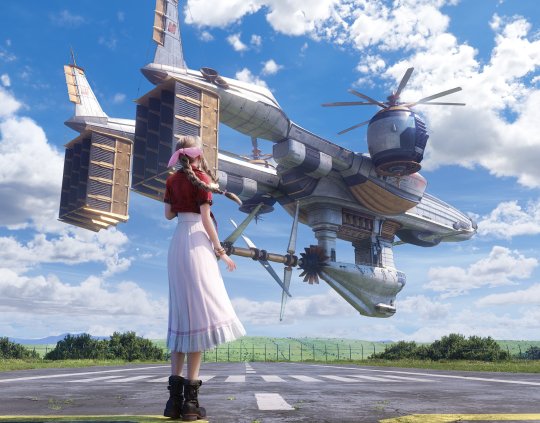
■ Regions of the World
The world is comprised of multiple regions, each boasting unique environments for players to explore and experience on their adventure.
Kalm
A halcyon hamlet kept safe from the outside world by a sturdy stone wall. Though it lacks a reactor of its own, it thrives thanks to a steady supply of mako piped in from the metropolis of Midgar, which is visible from atop the town’s famous clock tower.

Mythril Mine
A once-bustling mine that connects the grasslands with Junon. Though once prized for its rich mythril deposits, the quarry fell into disuse after Shinra developed a superior mineral of their own, and the miners that once worked its tunnels have been replaced with monsters.
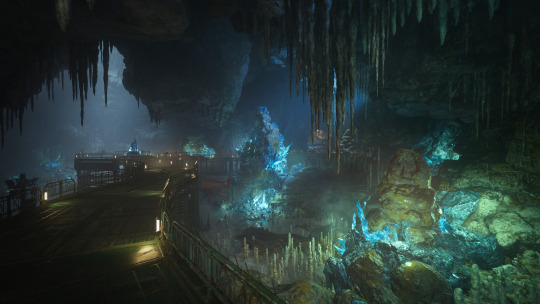
■ New Characters
Broden (voiced by Mick Lauer in English, Shinshu Fuji in Japanese)
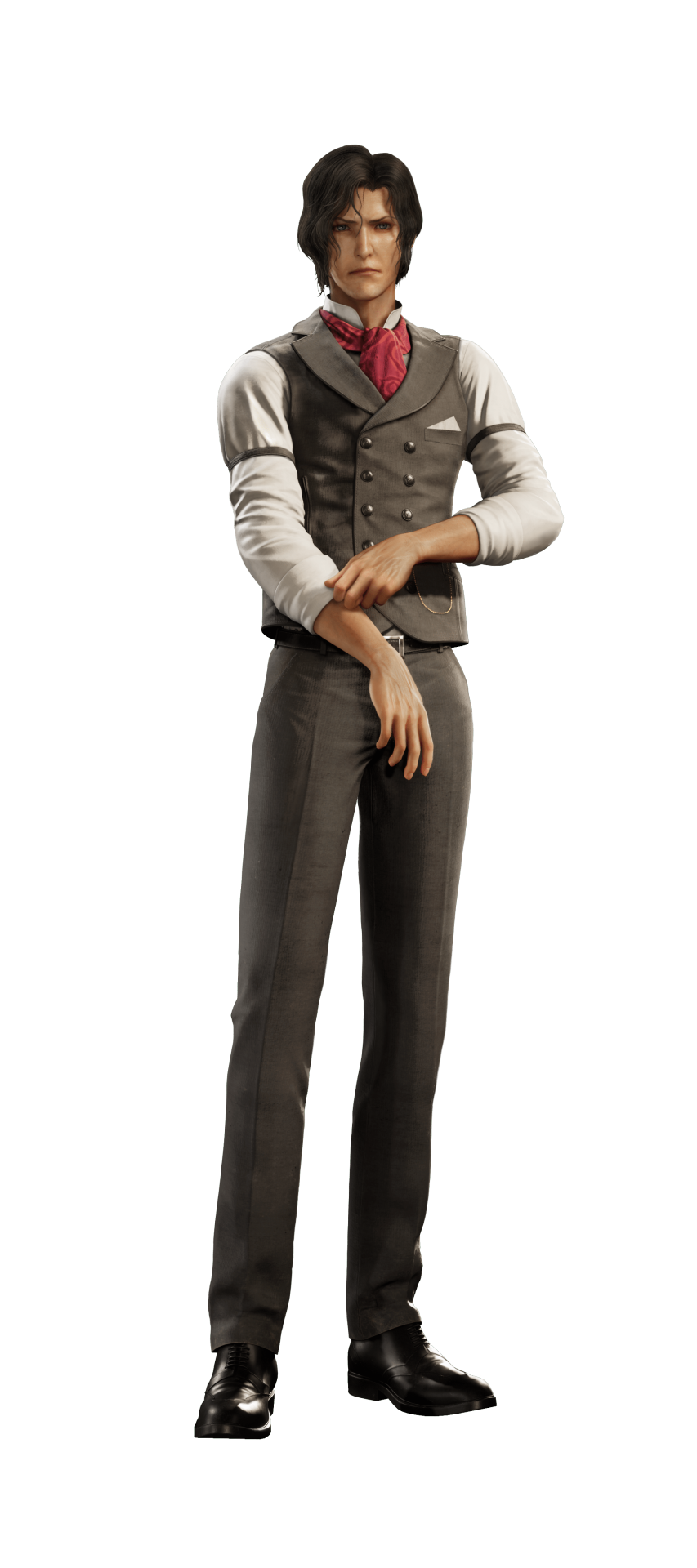
Owner and operator of the Inn at Kalm. He bears a grudge against Shinra, offering to help Cloud and friends escape their would-be corporate captors. His gaunt appearance may be due to his recent bout with an unknown illness.
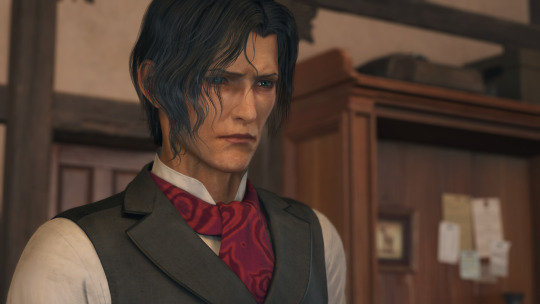
Rhonda (voiced by G.K. Bowes in English, Rei Igarashi in Japanese)
Mayor and sheriff of Under Junon. Her home, once a prosperous fishing village, fell into decline after Shinra constructed a military fortress overhead and a deep-sea mako reactor offshore. Despite Cloud and friends’ status as alleged terrorists, Rhonda still allows them to pass through her town.

Priscilla (Voiced by Reese Warren in English, Rikako Oota in Japanese)
A cheerful young girl who lives in Under Junon, often seen swimming with the dolphin she trains. The offshore mako reactor has contaminated the surrounding waters, and Priscilla fears for the safety of her dolphin friend and other aquatic creatures.
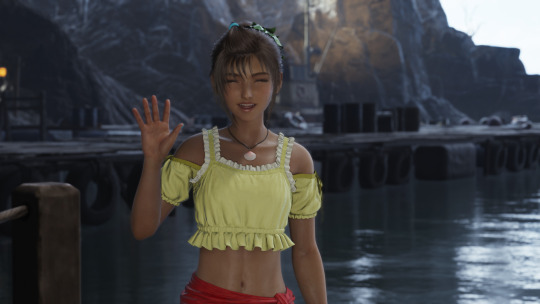
Billy (voiced by Paul Castro Jr. in English, Yuusuke Shirai in Japanese)
Grandson of Bill, owner of a chocobo ranch in the grasslands. Having lost his parents at a young age, he and his sister were raised by their grandfather. This young ranch hand kindly offers to teach Cloud and company the ropes of chocobo wrangling—on the condition that they patronize his sister’s shop.

Chloe (voiced by Trinity Bliss in English, Hisui Kimura in Japanese)
Billy’s younger sister, she runs a shop on the ranch where she sells crafting materials and other curios. Warm and kindhearted, she engages politely with Cloud and company and is grateful for their patronage. At the same time, she is worried about her brother’s fixation on making money.

■ Combat
Red XIII
—Basic Attacks
Red XIII slashes at foes with his sharp claws. Hold down the button to unleash a wide-range attack that helps build ATB quickly.
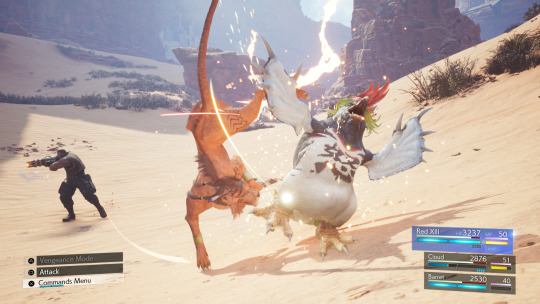
—Abilities
Red XIII boasts a vast array of skills, from lightning-fast physical strikes to ranged magical attacks. Stardust Ray conjures an exploding orb of light that scorches all foes caught in the blast.

—Vengeance Mode
Block incoming attacks to fill the vengeance gauge, and unleash that energy to enter vengeance mode, enhancing his physical attacks and his evasive prowess. Siphon Fang delivers a powerful blow while absorbing some of the enemy’s HP—all without expending ATB.
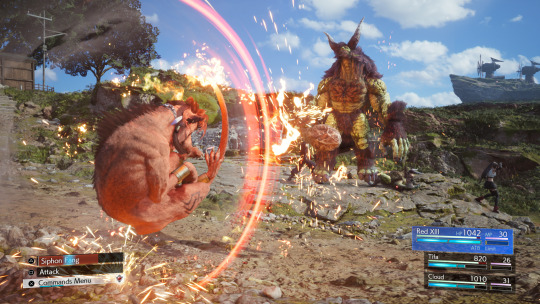
Aerith
—Unique Ability: Ward Shift
Aerith can instantaneously warp to any sigils she has created, allowing her to move about the field with ease and maximize the impact of her magic.
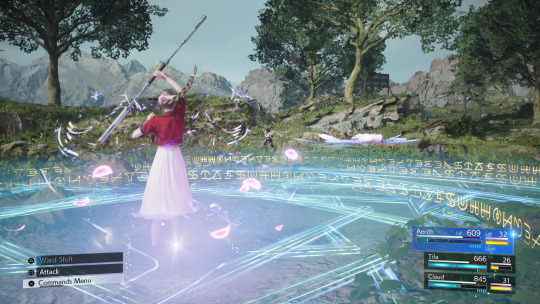
New System: Synergy Abilities
Powerful attacks in which two characters team up to turn the tide of battle. More abilities will unlock as you increase the party level─ a numerical expression of how closely-knit your team is─and deepen the affinity between party members. Fill the synergy gauge by using abilities, then unleash a synchronized assault!
—Cloud / Tifa: Relentless Rush
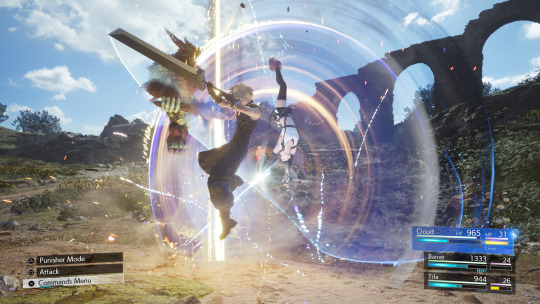
Cloud launches Tifa toward an enemy to attack in tandem.
—Barret / Red XIII: Overfang
Barret sends Red XIII flying toward an enemy at high velocity.
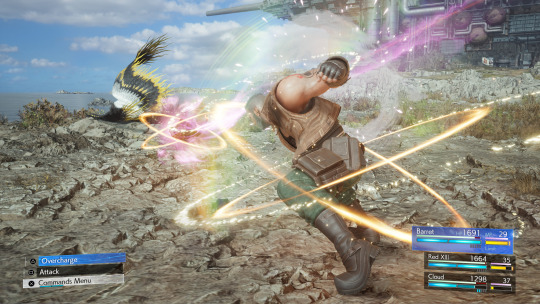
New System: Synergy Skills
Two party members team up to activate useful abilities without consuming ATB. These commands can be executed while blocking, and provide a wide array of beneficial effects. Each pair has their own unique set of abilities; some deal damage, while others offer support.
—Cloud / Aerith: Spell Blade
Gather strength, then team up to unleash a charged magical attack.
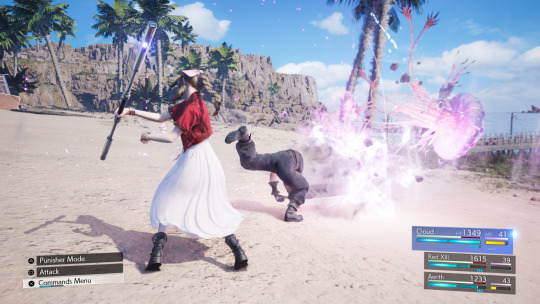
—Barret / Cloud: Mad Dash
Team up to charge forward while guarding against incoming attacks. Activate in sequence to trigger a three-hit combo.

Summons
Setting summoning materia will grant access to the power of the gods. A conjured deity will follow the player’s lead and fight enemies automatically, but you can also instruct them to use special abilities. Before they depart the battlefield, summons will unleash one final attack that will wreak immense havoc.
Kujata
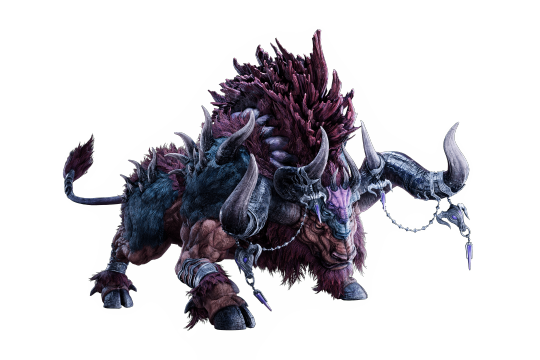
A bovine deity that charges around the battlefield wielding the power of fire, ice, and lightning. It throws foes with its enormous horns and unleashes magical attacks that strike even distant enemies’ weaknesses.
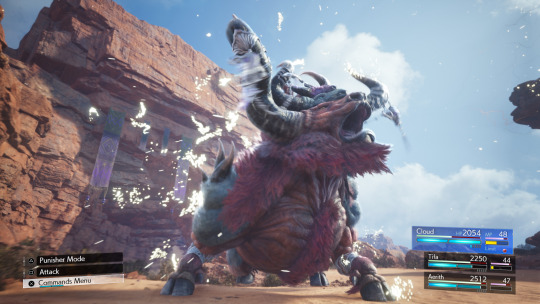
—Kujata bounds towards foes with reckless abandon and manipulates its elemental affinities to deliver magical attacks. Blazing Horn launches a concentrated burst of fiery energy at an enemy, blasting them back.

—Kujata unleashes Tri-Disaster just before leaving the battlefield, a powerful wide-range attack imbued with the powers of fire, ice, and lightning—sure to hit many foes right where it hurts and potentially wipe them out.
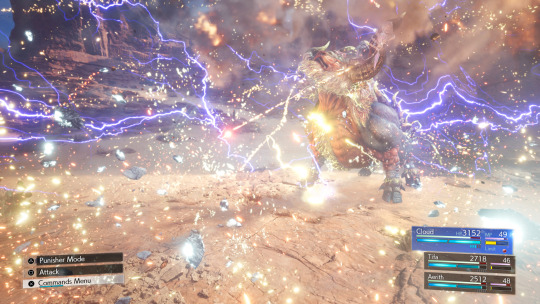
■ World Intel
Chadley enlists your help with deepening his understanding of the world. As you explore the various regions, you will uncover new areas rich with treasures and natural wonders. Data points accumulated in your travels can then be spent to develop useful new materia.
Protorelics
Protorelics are artifacts of unknown origin that emit a unique energy signal. These elusive antiquities are hidden throughout the world─but with the aid of activated remnawave towers, Chadley should be able to point you in their direction. Be warned, however: they seem to alter space-time, and are known to cause strange phenomena.

Materia Development
Assisting Chadley with his world-spanning research will allow you to accrue data points, which can then be spent to develop new materia. Some offer access to spells of multiple affinities, while others grant the use of unique abilities—all of which are sure to prove useful against even the most formidable foes.
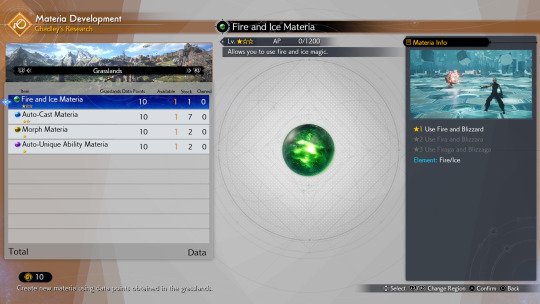
■ World: Customization
Chocoboutiques
Chocobo ranches are also home to chocoboutiques, stalls at which you can freely customize and recolor your bird’s equipment from head to talon. Gear will impact its performance in chocobo races, so find an ensemble that suits your style and go for the gold!

■ System: Combat Styles / Difficulty Levels
Final Fantasy VII Rebirth offers multiple combat styles and difficulty levels for players of all persuasions.
Combat Styles
“Active” mode offers players total control over their characters’ every move, allowing them to execute advanced strategies. “Classic” mode automates characters’ basic actions, giving players time to focus on specific command selection.

Difficulty Levels
“Easy” difficulty allows people to focus on the story rather than battles, while “Normal” provides a reasonable challenge for most players. In the newly added “Dynamic” difficulty, enemies grow stronger as your characters do—perfect for players who crave constant challenge.

Final Fantasy VII Rebirth, the second game in the Final Fantasy VII remake trilogy, will launch for PlayStation 5 on February 29, 2024.
#Final Fantasy VII Rebirth#FFVII Rebirth#Final Fantasy 7 Rebirth#FF7 Rebirth#Final Fantasy VII Remake#FFVIIR#Final Fantasy 7 Remake#FF7R#Final Fantasy VII#FFVII#Final Fantasy 7#FF7#Final Fantasy#Square Enix#video game#PS5#late post#long post
24 notes
·
View notes
Text
Headcanuary Challenge - One Headcanon per Day
Day 2: Weather
_________________________________________________
Wind is the defining force shaping Utapau's topside landscape. While most of the planet's surface is covered with grassland-type ecosystems differentiated by temperature, altitude, and soil type, there are some areas where rock and sand predominates the landscape.
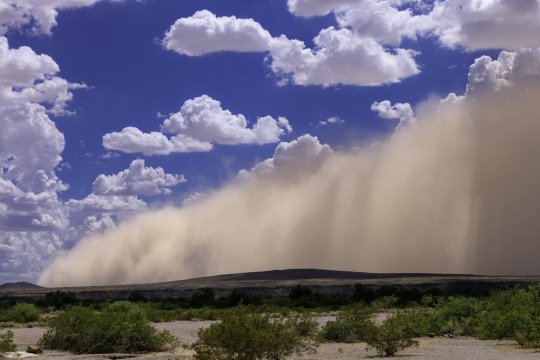
From these areas, massive hyperwind storms form. The fine sand and ancient seabed silts are blown up into a static-charged front that sweeps across the planet. Hot air fronts rise underneath denser, cooler fronts from the poles, causing instability in the vertical air current.

Cyclones, sometimes kilometers wide, spin off. They are known to be so violent and frequent, that permanent settlement of the surface has been deemed impossible. That said, the natives of Utapau have adapted to the weather conditions of their planet.
Most of the population lives in sinkhole cities, powered by wind turbines and kept sheltered from the violent storms above.
Some live outside the cities, in areas not carved by the receding Great Ocean, but by the wind itself. In the canyon regions, shear winds are common, but they rarely form into the more destructive storms that plague the flatter landscapes. Similarly, the Dactillion clan makes their winter home atop a massive plateau, kept safe above the areas where storms sweep through.
Others have their own ways of dealing with the storms. Utai shepherds, tending to their animal charges, will never stray far from a sinkhole or cave system. Most surface clans of Pau'an Plainsmen use their sensitive hearing and word of mouth to track the storms, constantly moving their homes to stay abreast of the weather. The Stormbolt clan makes their livelihood sticking close to the margins of the fronts, serving as a last warning system for other Plainsmen while reaping the benefits of the percipitation coming off the edge of the storms.
After all, while these hyperwind storms are destructive, they are essential to the planet's ecology. As mentioned in yesterday's entry, there is no standing surface freshwater, so the storms keep the dense inland prairies hydrated as they pass. Lightning-enduced fires and wind keep the sparse blba trees from taking over the landscape. Minerals locked in stone made from ancient seabed are blown over the fields, introduced back into the soil to nourish rich plant biodiversity (and subsequently, animal biodiversity). Reptavians flourish, riding the air currents to the farthest reaches of the planet, often drawing Pau'an and Utai close behind.
End of Entry.
Previous Entry | Next Entry | Ride or Die Series
_________________________________________________
@oh-three @nobody-expects-the-inquisitorius
11 notes
·
View notes
Text
Digimon Evo Line Day 3!
You can now check on the game via the tag Pajiramon's Hatchery.
Pink slime paste baby won yesterday's poll!
Now we get to the meat of the game. Once a Digimon enters its Child stage (AKA Rookie), it will have taken shape as a far more advanced creature than before. Environmental factors such as how a Digimon is raised impacts everything about them. As such, they need even more classifications to describe them.
Each poll option will be in this format:
Type - Attribute - Field
Type: A specialized classification for the physicality of the Digimon. Some are so unique that they're the only ones WITH that type. They can be anything from Little Demon to God Man.
Attribute: The classification depicting how Digimon behave and interact with their world as sentient programs. These include Data, Vaccine, Virus, and Free. Data Digimon are made up of "neutral" data, Virus Digimon are akin to malware and computer viruses, Vaccine Digimon are akin to virus-stopping programs, and Free Digimon are a "blank canvas" that resemble none of these and could become any of them.
Field - Digimon categorization based on their "ecological" niche and where they tend to live. For example, Nature Spirits are generally beastly Digimon inhabitants mountains and grasslands. Nightmare Soldiers are usually demons and other forces of "evil". Some Digimon fit the mold of multiple fields. I may list multiple fields to differentiate them.
From this point on, the polls will not have physical descriptions, just classifications. After all, some later stage Digimon will get too complicated to fit into a poll option even if we wanted to.
As a reminder, the game stops if:
-The Digimon no longer has any evolutionary options
-We reach Ultimate(JPN)/Mega (dub) and you all vote to stop it there. Remember, some Ultimate Digimon can keep evolving!
When the game ends, I will reveal the whole evo line and even reveal the options that didn't win. With that out of the way...
3 notes
·
View notes
Text

The world of Diatatus. Four major continents make up the world; Omoris, Titan, Tamohi, and Tomoyo.
Omoris is majority desert, cliffs, and altitude. The Sand Horn (the large desert to the west) is a huge, nearly singular plateau. The western tip hangs precariously over the ocean, but declines all rain that tries to land on it. The southern desert borders the ocean as well, but little life can grow in its hostile sands. Even enterprising mosses and lichens disappear in the dunes.
Titan is so large that it's been split into two main areas (the borders of which are... Hazy to say the least.) West Titan is full of prospering kingdoms that benefit from natural resources like forests, mineshafts, and endemic animals. The Heartland is a dry steppe-desert with several concentrated populations. On the western coast is a few peninsulas, one of which is a curled and diseased kingdom known as the Patchwork City. To the south is The Beard, a massive delta filled with swamps.
South Titan is home to the Lingu, a massive river that runs north to south, being lifeblood to jungles within the landmass. Life can be cramped here, but this area is full of ancestral knowledge. It may be home to the few people that know of this world's history. Islands to the north, known as the Ribs, provide showstopping gemstones and minerals, including those needed for complex inventions.
Tomohi, far to the south, is full of megafauna and microfauna alike. In fact, it's quite uncommon to find any mid-sized animals at all. The steep mountains on the northern coast (larger than any other in the world) protect lush forests and grasslands. The northern desert is also far from unlivable, providing towns for several unique fishing cultures.
Tomoyo is dominated by huge, flat grasslands. The only interruption to this green ocean is a group of mountains in the center of the continent, which surrounds a very prosperous country. In the south, a large inland sea draws in many travelers for its rich diversity of life. Colorful corals, fish, and even whales make their permanent home here.
5 notes
·
View notes
Text
(4+1)+(4+3)=12
Erland was born in solitude, and is to his very core a solitary being. Yet he delights in company, and gladly hosts guests in his molten halls, or plays the guest himself, in another's house.
Thus, he can get along well with Omeara, and all her crawling companions, which make their home at the very threshold to his realm. Though they are diametrically opposed in many aspects, the basic principle of mutual respect, and mutual recognition, ensures a coexistence that is perhaps not frictionless, but ultimately fruitful.
But that relationship is one based on careful manoeuvring and consideration, and of not stepping on each other's toes.
It is a completely different thing when an interloper from the surface tears through the land and floods the underworld with cold, wet, muddy, seawater. The deluge takes Erland with surprise - when it comes, he is not at home, instead entertaining Omeara with tricks of fire and shadow. Cursing his negligence, he rushes back, but the water, silt, and steam has time to spoil vast swathes of his domain before he can patch up the holes in the ceiling, and his frustration only grows as he cleans up the intrusion.
[shape land: 12-3=9]
In an effort to get rid of all the water, and prevent any such disaster in the future, Erland creates a system of volcanic ducts and vents, which release scalding steam, and burning gases across the surface of Baled. The streams and lakes formed by this are enriched by minerals from the depths of the earth, making them toxic to most life even after they cool.
[shape climate: 9-2=7]
Seeing the need to know more about the world above, Erland gives life to the stone: pebbles grow legs, and skitter around in imitation of the children of Naakrsh and Haebarik, boulders roll uphil, and sing in the breeze, and the masterpiece: a far-flying bird, graceful in shape, and durable in the extreme, the phlamingo flies across the world all year, before returning home to the boiling lakes to brood. There they whisper tales of everything they've seen to the flickering flames and thus act as Erland's eyes in the sky. They feed on the rocks of the lands they are in, and their plumage takes the colour of whatever they have consumed.
[shape climate: 7-2=5]
Hearing their first reports, Erland realizes the world is as of yet much too lifeless. When next the phlamingoes leave, they carry with them a great many seeds, which they spread across the empty continents. Grasses, shrubs, and wildflowers grow where nothing grew before. Grasslands, moorlands, and prairies develop.
#oops i meant to post this yesterday#also yes ive seen omearas post.#i just interpret it as erland actually not being very entertaining#world 02547 diegesis
5 notes
·
View notes
Text
Saturday
Rain, rain. This has the potential to be a very long drive. We’ve got to go over 500 miles to Regina, Saskatchewan. That’s a quarter of the way across North Dakota (100+ miles), turn north, and cut a diagonal line to Canada. 350 miles in the USA. Another 150 in Canada. The first 100 miles or so were in the rain.

Our view for the first couple hours.
To give you an idea of how wide open the spaces are out here, we left the hotel without breakfast and thought we’d drive a few exits down the highway for food. We skipped the first 3 and the next thing we knew we were 40 miles west of Fargo before we found anything. With that, we gassed up the car every time we stopped today. We never really knew how far we’d have to drive before the next gas station.
Along the way in North Dakota we saw plenty of farmland, grassy prairies, rolling hills, and flat plains. Much of the ride was on 2 lane intrastate roads with no divider for oncoming traffic and with a 65 MPH speed limit (the divided interstate has a 75 MPH limit). There was quite a bit of construction along the way which slowed us down. At one point, they had scraped all the asphalt off the road leaving nothing but dirt for about 3 miles. Fortunately, it hadn’t rained there.

3 nasty construction miles.
Although this grassland was along the construction route.
There were many interesting sights along the way. At one point, we were in a valley for about 5 miles. Along the hills the graduating seniors from the local high school had laid out their graduation years in stones forming huge numbers. This started back in 1945 and only 2 years had yet to leave their mark.

You can’t tell from the pic but these numbers are 30 feet tall, at least.
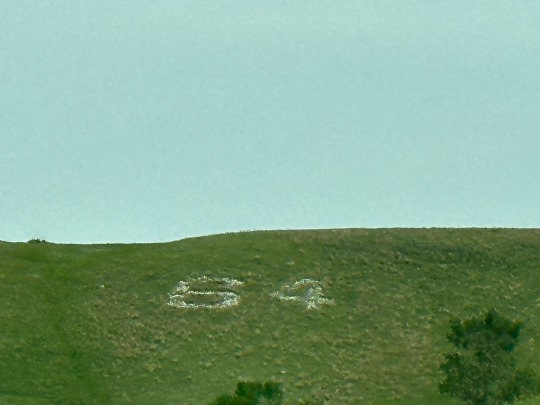
Earliest year we saw.
We entered Canada via a town named Portal, ND. The border agent asked us all the usual questions and let us pass. The first town on the Canadian side was North Portal. Makes sense!

Oh Canada!
Saskatchewan, initially, wasn’t all that pretty. A mining company is surface mining a large area, 10s of square miles. What isn’t being mined was mined and what remains are mounds of vegetation-covered slag heaps. Once beyond the mining operation, things opened up into more farming. As well as crops, the farmers are exercising their mineral rights with fracking and pumping oil. There were more pump jacks than people.
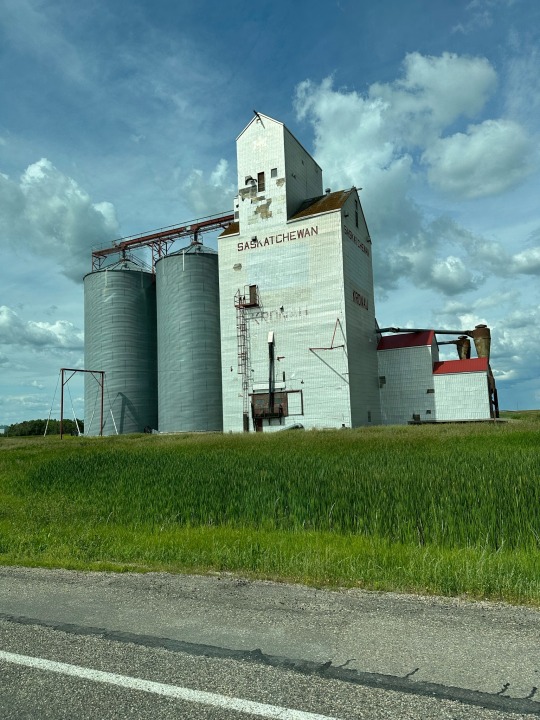
Some Saskatchewan industry.
Regardless, the sky seemed to be endless. We also saw some wildlife… six pronghorns (3 adults, 3 children). A highway sign also warned us about moose but we never saw any.

Rapeseed, perhaps. To make Canola Oil.
Once in Regina, we quickly checked into our hotel and then scooted out to find food and drink. We walked into the Hotel Saskatchewan, a 100+ year old grand hotel that was build by railroad barons. We enjoyed the bar and they served excellent food. Our bartender was very attentive and educated me on Canadian whiskey.

The bar at the Hotel Saskatchewan.
After a few hours of relaxation in our high back chairs we decided to make our way back to our hotel. We hope to catch the sunset but don’t know if we will last until 9:14pm. You’ll have to find out if we did, tomorrow.

I watched it! Sunset beyond rail yard.
2 notes
·
View notes
Text

A bald eagle arrives to steal a perch on a tree log that offers a strategic view of the shoreline at the Chilkat Bald Eagle Preserve in Alaska. When other eagles drag freshly caught salmon in from the water, these bystanders swoop in to take a share. "Hours of observing their patterns and behavior helped me capture moments like these,” says photographer Karthik Subramaniam, a software engineer with a passion for wildlife photography. Photograph By Karthik Subramaniam

In May 2021, the Fagradalsfjall volcano erupted in the Reykjanes Peninsula in Iceland for the first time in over six thousand years. The lava flow continued for six months, spreading hard black rock across the landscape. It was, says Riten Dharia, who captured this image, "an exhibition of the raw and awesome power of nature." Photograph By Riten Dharia
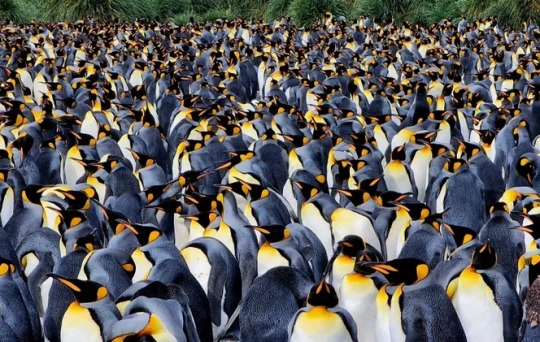
King penguins crowd together in the viewfinder of Rhez Solano on the beaches of Gold Harbour in South Georgia. The island sits in the remote southern Atlantic Ocean, not far from Antarctica, and hosts some 25,000 breeding pairs of king penguins, along with gentoo penguins, and elephant seals. Photograph By Rhez Solano
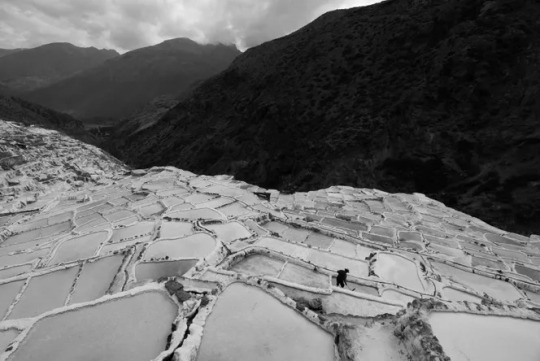
There are around 4,500 salt wells terraced into the hillside at the Salt Mines of Maras in Peru. The archaeological record shows that salt extraction likely began here before the Inca Empire, perhaps as far back as 500 AD. Today that tradition continues with the families who own wells, each of which produces some 400 pounds of salt per month. “The salt wells receive water through channels sourced by a salty underground spring nearby and once the water evaporates, the crystallized salt remains,” says An Li, who captured this picture. “Here, a salt miner is using a wooden rake to extract the salt." Photograph By An Li

Asiilbek, a nomadic Kazakh eagle hunter, preps his golden eagle, Burged, for a horseback hunt in the grasslands outside of Bayan-Ölgii, the westernmost province of Mongolia. The eagle’s training begins when fledglings are captured from their cliff edge nests and taught how to hunt for hare, fox, and even deer. The tradition stretches back 3,000 years. “For this image, I was lying on my stomach in the prone position looking through the electronic viewfinder at the edge of the stream,” says photographer Eric Esterle. “The ground shook as Asiilbek's horse passed less than a few feet away, splashing me with ice cold water. I remember covering my camera with my body and putting my head down.” Photograph By Eric Esterle

On a road trip through the Austrian Alps, Alex Berger spotted a one-lane road that wound into the mountains and looped back on the map. He followed it alongside a small stream lined with walls of forest when he spotted this golden tree blooming from between the trunks. There’s “a fantasy-ish inspired dimension for me,” says Berger, “which gives me goosebumps.” Photograph By Alex Berger
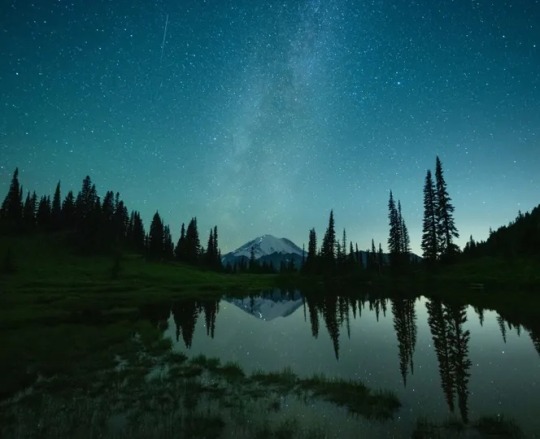
Sometimes a sleepless night is key to great photography. At approximately 3:40 a.m. on a frigid summer morning, photographer W. Kent Williamson snapped this image from Tipsoo Lake in Mount Rainier National Park, Washington. From across the still water, he could see a line of headlights as weary climbers approached the peak’s 14,411-foot summit—the culmination of a multi-day climb. "The night sky was unusually clear, and the Milky Way could be seen just above the mountain,” Williamson says. “I was surprised to see how bright the climbers’ lanterns were.” Photograph By W. Kent Williamson
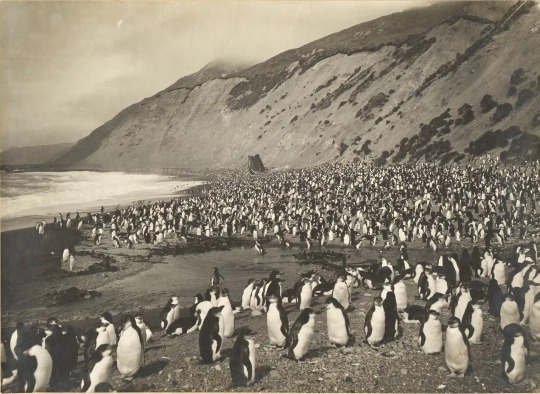
From Frozen Memories: Rare Antarctic Expedition images! A royal penguin rookery at Nuggets Beach on Macquarie Island. Photographer and adventurer Frank Hurley went on multiple voyages but his best-known images were taken when the Endurance was crushed in the ice during explorer Ernest Shackleton’s 1914 expedition. Photograph: Frank Hurley
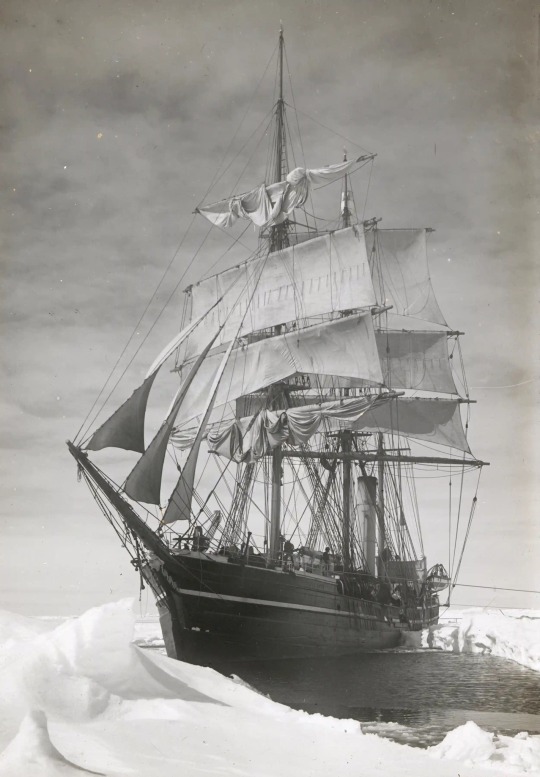
From Frozen Memories: Rare Antarctic Expedition images! The Terra Nova held up in pack ice during Robert Falcon Scott’s expedition to the Ross Sea and South Pole. Photograph: Herbert George Ponting
3 notes
·
View notes
Text
Not Oversimplified Elvaria Lore- Part 2, Classical History(The Age of the New Kingdoms/Creation Era)
Hikarina got the shit going so now more kingdoms will pop into existence in the nest 60,000 years
Åsthenar's island keeps moving and merges with a giant mountain range, so that's their territory and they call it the Gyvorkal Mountains
Fulegria becomes Fulegor Adontium but still has their crisis
The Hikarinians and Yūregians gave hope to remaining undecided survivors of The Fall that they could find a place in the world, so some began to sail out to the other continents they saw hints of from across the oceans
Some feared that those landmasses from across the sea were only islands, and so held off on sailing until someone from the leaving groups returned
Some Lunarisians travelled north to the frozen landmass they saw, learning to wield bitter frost to create icy paths through sea
They never came back and some hope was lost, but more decided to sail away, believing the northerners had found land
The frozen north became Halinskor, and the kingdom that would be established Yukiosa, the kingdom of ice
Some Urthalisans sailed east to the continent saturated in elemental energies, learning to tame the capricious sea
They created large boats which they propelled with their power, and found new land they called Jin'hu-Guo, establishing Walekria, the kingdom of water
Unlike the Yukiosans, after only a thousand years, they came back for the remaining survivors on the now named continent of Yinorael, bringing fleets to ferry them to the elemental continent.
Many went with the Walekrians except for a small group of Urthalisans that wished to find their own way, and this lot sailed south to the continent of Kavathanar, finding the half elves that had isolated themselves for many thousands upon thousands of years
They chose to join these people in their mysterious ways and over generations would become indistinguishable from them, but never went back to Yinorael
Those that went with the Walekrians would gain new power as they traversed the continent, bringing with them new kingdoms.
Some Lunarisians found a light in the caves of which they followed to find abundances of minerals, and so they called the land Cevris Astal and established the subterranean kingdom of earth, Föllen Alatsa
Some Solarians felt the heat of magma that reminded them of the sun they once loved, and so they called the scorched land Emorscal and established the kingdom of flame, Flaerna
Some Urthalisans travelled through cavernous darkness along a river that seemed to breathe and found a vast cave of crystals that radiated with the glow of Asurei, and so they established the kingdom of crystal bearing the name of Lustarise, a name shared by the cave system that birthed the kingdom
Those that followed the Flaernans but did not embrace fire traveled northeast and discovered the arid desert, yet they were not satisfied with the scorching heat it brought
There was no other land that they felt a call to, and this one they felt was closest to the sun they once embraced, and so they called the land Desaebla and established the kingdom of sand, Dalirna
But not all of those that came to the new continent had found a place where they belonged, so they would be guided by observant beings to lands and powers they could call their own
Cirania, a benevolent being among the Dysheraln descended from the Dak-Shan of old, decided to lead one of the outlier groups to the land of forests and grasslands, teaching them to embrace the powers of nature despite it not being a legitimate element, and so this land of green and the new kingdom of nature would both be named Floernia
The Sky Lords, the four elves that fused with powerful air elementals over a hundred thousand years ago, would come down from the air lands above to lead another of the outlier groups to the land above the clouds, teaching them to embrace the sky instead of the distant sun and moon, and so this land far above would be named Syklari, and the kingdom of air, Avianaen, would be established
The final outlier group would find their place in the continent a century later, still clinging to their roots of celestial power from the solar and lunar legacy that died after The Fall
Two beings would descend from the dark of night and light of stars to bring the group past a dense forest to the north- Sarkath, The Celestial One, and Qilanar, The Black Serpent
They would each bless one half of the group, with Sarkath granting his half the ability to reach towards the stars once more and draw power from stellar energies, and Qilanar granting her half the ability to pierce through the darkness of space and draw power from the inky blackness that embraced the stars
These elves would call the land Qisara Kranor and establish the kingdom of Zodiana, worshipping the wyrm-like beings almost as if they were gods
Elemental energies still spread throughout the world and Asurei still tainted the atmosphere, so the elves would continue to diverge and gain their own distinct adaptations and appearances to their lands until few resembled the Solarians, Lunarisians, and Urthalisans of the past(except Yūregians and Föllen Alatsans still looked mostly like Lunarisians since they didn't need to change much)
However, as thousands of years passed and each kingdom gained their separate identities, they would forget their blood ties from the ages long past to reach for individual futures
This would mark the start of the modern era, but also the start of war- a concept the elves had not contemplated since the Dak-Shan were defeated over eight hundred thousand years ago in the distant forgotten past.
3 notes
·
View notes
Text
Cross Stitch Stories: Asad: King of the Grasslands Part 3

Part 3: The Heart of the Mountain
Asad’s roar tore through the mountain pass, reverberating off the cliff walls and sending a shudder through the hyena pack. They hesitated for a fraction of a second, but in the wild, that was all the time needed to tip the scales. With a surge of raw power, Asad leaped into the fray, his claws slashing through fur and flesh, his teeth bared in a snarl that promised no mercy.
The lead hyena went down first, Asad’s powerful jaws clamping around its throat in a deadly grip. With a violent shake, he tossed the lifeless body aside and turned to face the rest of the pack. Blood matted his golden coat, but the fire in his eyes burned brighter than ever. He was wounded, but the pain only fueled his rage.
The hyenas, though fierce and numerous, began to falter. One by one, they retreated, realizing that the lion they had cornered was not so easily defeated. But as they withdrew, their leader’s death cry summoned reinforcements from the shadows, and soon, more hyenas emerged from the crevices, emboldened by the scent of blood.
Asad was surrounded again, his breath coming in ragged gasps as he fought off wave after wave of attackers. His vision blurred with exhaustion, but his mind remained sharp, calculating his next move. He couldn’t keep this up much longer; the pack was relentless, and his strength was waning.
Then, through the haze of battle, Asad spotted an opening—a narrow crack in the cliffside that led deeper into the mountain. It was a gamble, but it was his only chance. With a final, desperate burst of energy, he broke through the ring of hyenas and bolted for the crevice, his body moving on instinct as he squeezed through the tight space.
The hyenas, caught off guard, snarled in frustration and gave chase, but the crevice was too narrow for most of them to follow. A few managed to squeeze in, but their progress was slow, and Asad was already far ahead, plunging deeper into the mountain’s dark interior.
The narrow passage twisted and turned, the air growing colder and more oppressive with each step. The light from the entrance quickly faded, leaving Asad in near-total darkness. His breathing echoed in the confined space, and the distant growls of the hyenas reminded him that the danger was far from over.
But the deeper Asad went, the more familiar the terrain became. This was not his first time navigating these labyrinthine tunnels. Long ago, as a cub, he had explored these caves with his pride, learning the secrets of the mountain from his mother and older siblings. Those memories guided him now, helping him find his way through the darkness.
After what felt like an eternity, the tunnel opened up into a wide cavern, its walls glittering with veins of quartz and other minerals that caught the faint light seeping in from cracks above. Asad staggered into the open space, his body trembling with exhaustion. He collapsed onto the cold stone floor, his sides heaving as he tried to catch his breath.
For a moment, there was silence, broken only by the sound of dripping water and the distant echo of the hyenas’ frustrated cries. Asad knew he had to keep moving, but his body refused to obey. Every muscle ached, his wounds stung, and his vision was darkening at the edges.
As his consciousness began to fade, Asad became aware of another presence in the cavern. His head jerked up, and his eyes focused on a figure emerging from the shadows—a solitary Berber warrior, clad in tattered robes and wielding a spear. The warrior’s eyes widened in surprise as they locked onto the lion’s, but there was no fear in his gaze, only a quiet understanding.
The warrior approached cautiously, his movements slow and deliberate. Asad growled weakly, but he was too exhausted to do more than lift his head. The warrior knelt beside him, his expression unreadable as he studied the lion’s wounds.
In a low voice, the warrior spoke in a tongue that Asad didn’t fully understand, but the tone was gentle, almost reverent. The warrior placed a hand on Asad’s flank, feeling the shuddering breaths beneath his fur. Then, to Asad’s surprise, the warrior rose and disappeared into the darkness, only to return moments later with a bundle of dried herbs and a flask of water.
Asad watched warily as the warrior set about tending to his wounds, applying the herbs with practiced hands and offering the water in a makeshift bowl. The lion’s instincts told him to reject the help, to remain fierce and untamed, but the exhaustion was too great. He drank the water greedily and allowed the warrior to care for him, his body slowly beginning to relax under the man’s ministrations.
Hours passed in this strange truce, and as the day faded into night, Asad began to regain his strength. The warrior, now resting by a small fire he had kindled, spoke softly, telling stories of the mountains, the stars, and the creatures that lived in these lands. Asad listened, not fully understanding the words but finding comfort in the rhythm of the man’s voice.
As the fire crackled and the darkness deepened, the warrior turned to Asad with a serious expression. In a voice laced with warning, he spoke of an even greater danger that lurked deeper in the mountains—a rogue lion, one who had once been part of Asad’s pride but had turned against his kin to claim these lands for himself. The warrior called him “Marruk,” a name that sent a shiver down Asad’s spine.
Marruk, the rogue lion, was a beast driven by madness and bloodlust, a lion who had no regard for the old ways, for honor or pride. He had taken these mountains for himself, and any who dared to challenge him met a swift and brutal end.
Asad listened intently, his weariness fading as the warrior spoke. This lion, Marruk, was not just a rival—he was the embodiment of everything Asad stood against. The chase that had brought him here, the hunt for the stag, now seemed insignificant compared to the challenge that lay ahead.
The hyenas were still out there, lurking in the shadows, but they were no longer Asad’s primary concern. The lion knew what he had to do.
As the warrior’s tale ended, Asad rose to his feet, his strength renewed by the fire in his heart. The warrior watched him with a knowing look and nodded in understanding. The time for rest was over.
The king of the grasslands would face his greatest challenge yet.
Come back tomorrow to find out what happens.

This story was brought to you by the Cross Stitch Pattern Animal Mammal Barbary Lion With Story and Audio. Not only does this design look great, but it also tells a powerful chase story, with an audio recap included. The hero of our tale, Asad highly recommends it. For more information, visit drewzeitlin.gumroad.com/l/barbary lion. You can see all our cross-stitch patterns at DrewZeitlin.gumroad.com This is not your great-grandmother’s cross-stitch—it’s a multi-sensory experience! And one more thing: you get to choose the price. What do you have to lose? But how much do you have to gain?
#crafts#cross stitch#home decor#needlecraft#diy#needlework#crafting#crossstitch#homemade#animals#lion
0 notes
Text
The Impact of Humans on Nature: A Deep Dive

Introduction
The relationship between humans and nature has always been complex and intertwined. Over centuries, human activities have significantly impacted the natural world, often in ways that are detrimental to ecosystems, wildlife, and even our own survival. As we progress further into the 21st century, understanding and addressing the impact of humans on nature has become more critical than ever. This blog explores the various ways in which human actions affect the environment, the consequences of these impacts, and the steps we can take to mitigate them.
Human Activities and Their Impact on Nature
Deforestation and Habitat Loss
One of the most significant ways humans have impacted nature is through deforestation. Forests, which are home to more than 80% of the world’s terrestrial species, are being cleared at an alarming rate for agriculture, urban development, and industrial use. This not only leads to habitat loss for countless species but also disrupts entire ecosystems. The loss of trees also means a reduction in carbon sequestration, contributing to climate change.
Pollution: Air, Water, and Soil
Human activities have introduced a wide range of pollutants into the environment, with severe consequences for nature. Air pollution, primarily from industrial emissions and vehicle exhaust, contributes to global warming and acid rain, which can harm forests, lakes, and wildlife. Water pollution, caused by agricultural runoff, industrial waste, and plastic debris, leads to the degradation of aquatic ecosystems and threatens marine life. Soil pollution, often from the use of pesticides and chemicals, affects plant life and can contaminate food sources.
Climate Change and Global Warming
The burning of fossil fuels, deforestation, and industrial processes have significantly increased the levels of greenhouse gases in the atmosphere, leading to global warming. This has far-reaching effects on nature, including more frequent and severe weather events, rising sea levels, and shifting climate zones. These changes disrupt ecosystems, alter animal migration patterns, and threaten species with extinction.
Overexploitation of Natural Resources
Humans have a long history of exploiting natural resources for economic gain, often without regard for sustainability. Overfishing, hunting, and the extraction of minerals and fossil fuels have depleted resources and led to the decline of many species. This overexploitation not only threatens biodiversity but also undermines the health of ecosystems that are vital for human survival.
Urbanization and Land Use Change
The expansion of urban areas and infrastructure development has drastically altered natural landscapes. Wetlands, grasslands, and forests are being converted into cities, roads, and agricultural land at a rapid pace. This land use change fragments habitats, isolates wildlife populations, and reduces biodiversity. Moreover, the impervious surfaces of cities prevent natural water absorption, leading to increased flooding and reduced groundwater recharge.
Introduction of Invasive Species
Human activities have led to the introduction of non-native species to new environments, often with devastating effects. Invasive species can outcompete, prey on, or bring diseases to native species, leading to their decline or extinction. This disrupts local ecosystems and can result in significant ecological and economic damage.
Consequences of Human Impact on Nature
The impact of humans on nature has led to a range of environmental crises, including biodiversity loss, ecosystem degradation, and climate change. These changes not only threaten the natural world but also pose significant risks to human health, food security, and economic stability. The loss of biodiversity, for example, reduces the resilience of ecosystems, making them more vulnerable to environmental changes and less able to provide essential services such as clean air and water, pollination, and disease regulation.
Mitigating the Impact: Steps Toward a Sustainable Future
Conservation and Restoration Efforts
Protecting natural habitats and restoring degraded ecosystems are essential steps in mitigating the impact of human activities. Conservation efforts, such as the establishment of protected areas and wildlife corridors, help preserve biodiversity and maintain ecological balance. Restoration projects, such as reforestation and wetland rehabilitation, can help reverse some of the damage done to natural landscapes.
Sustainable Resource Management
Adopting sustainable practices in agriculture, forestry, and fisheries is crucial for ensuring that natural resources are used responsibly and do not become depleted. This includes techniques such as crop rotation, sustainable logging, and responsible fishing practices that minimize environmental impact and support the long-term health of ecosystems.
Reducing Pollution and Emissions
Reducing pollution and greenhouse gas emissions is critical for mitigating climate change and protecting ecosystems. This can be achieved through the transition to renewable energy sources, the adoption of cleaner production methods, and the reduction of waste and single-use plastics. Individuals can also contribute by making environmentally conscious choices, such as reducing energy consumption, using public transportation, and recycling.
Promoting Environmental Awareness and Education
Raising awareness about the impact of human activities on nature is essential for fostering a culture of environmental stewardship. Education programs, public campaigns, and community initiatives can help people understand the importance of protecting the environment and encourage sustainable behaviors. Empowering individuals and communities with the knowledge and tools they need to make a difference is key to creating lasting change.
Conclusion
The impact of humans on nature is profound and far-reaching, with consequences that extend beyond the environment to our own well-being. However, it is not too late to change course. By recognizing the importance of preserving nature and taking collective action, we can mitigate the damage done and work towards a more sustainable future. Each of us has a role to play in protecting the natural world, and together, we can ensure that future generations inherit a planet rich in biodiversity and ecological health.
Call to Action
Join the movement to protect our planet! Whether through conservation efforts, sustainable living practices, or simply spreading awareness, your actions can make a difference. Let’s work together to reduce our impact on nature and create a future where both humans and the environment can thrive.
0 notes
Text
This is My Original Post and Idea anyone who claims credit for this is a fraud and a liar.
Birdie Island
[[ Situation ~ (¹⁄₁₈): *(¹⁄₁): I wake up laying on sand as I see myself in the middle of immensely beautiful beach and quickly realise that I’m far away home, which means that I should figure out how to proceed with this insane turn of events. I have to do deal with the fact that I fell asleep on my bed last night and woke up to being on the beach in the morning. I’m completely confused as to why I am so far away from home. I’m completely lost as I am not from this island and or realm. I have no idea how or why I’m here right now. Most of the inhabitants are also curious and perplexed by my arrival onto the island. I’m free to do whatever I feel like however if I wish to return home I will have to explore and or interact with the island’s inhabitants. By the time I’m finally able to get home, I will have to choose to stay or leave. Either way the island would have left a permanent mark on my life.* ~ ]]
[[ Overview of the Island ~ (²⁄₁₈): *(¹⁄₁): The island I’m currently in is called Birdie Island. It’s called Birdie Island because the birds + fairies are the original inhabitants of the island. The island does not exist within the Earth. The island is made of both arcane and mundane physical beings. The overall population of the island is around a million people. The Earth is referred to by the Island’s inhabitants as the Mainland. This island has existed since time immemorial. People who enter the island quickly lose their memories of their previous lives in the Mainland until they return back there. This Island is not on Earth, and is outside of the Solar System. The only way anyone can only enter or leave through magical flight. The Island does not exist within the solar system of Earth. The island has 16 moons and 16 suns orbiting it. Both days and years alike are much longer on Birdie Island than on Earth. 103 hours, 37 minutes makes up a full single day on the island. There is around 60 hours of daytime and around 43 hours of nighttime during a single day on the island. 1985 days equals a full year on the island. Although the days and years feel long, they don’t feel as long to people who are on the island as they really are in reality. Earth = Mainland. Earth is the Mainland as most people live over there. The island is very peaceful without the White Shepherd, and with him the days are thrilling whereas the nights are scary.* ~ ]]
[[ Location of The Island ~ (³⁄₁₈): *(¹⁄₁): The island itself is sentient + magical. The island itself has the final say on who can enter or leave. Earth is referred to as the Mainland. The island doesn’t exist on Earth. The island isn’t inside the Earth or within the Solar System. The island exists in outer space, in between two stars of the Milky Way Galaxy. The island lives between two stars of the Milky Way Galaxy. Time moves slow. The island is constantly moving between the stars of the galaxy. The only way anyone can only enter or leave through magical flight as there are no other lands in this realm and the vast ocean is only surrounded by stars. At the highest land point in the island you can see everything/anything within the Milky Way Galaxy. At the lowest land point in the island you can hear everything anything within the Milky Way Galaxy.* ~ ]]
[[ Landforms of the Island ~ (⁴⁄₁₈): *(¹⁄₁): The island is spaciously vast + densely inhabited + extremely arable + vastly bounteous/teeming in resources such as rich, unique and or magical (flora + fauna + gemstones + crystals + metals + fossil fuels + minerals + rocks). The different landforms of the island are unique and or magical (Volcanoes + Rainforests + Mountains + Valleys+ Dunes + Grasslands + Scrublands + Forests + Wetlands + Caves. The bodies of water on the island are Lakes + Lagoons + Rivers + Bays + Gulfs + Seashores + Waterfalls + Swamps).* ~ ]]
[[ Fruits of the Island ~ (⁵⁄₁₈): *(¹⁄₁): The island has many different plants/trees that produce fruits including (Pineapple + Prickly-Pears + Spanish-Limes + Breadfruits + Mangoes + Avocados + Coconuts + Bananas + Papayas + Guavas + Passionfruits + Lychees + Dragonfruits + Soursops + Watermelons + Abius + Cocoplums + Chayotes + June-Plums + Malay-Apples + Mamey-Sapotes + Ackees + Plantains + Carambolas + Monkey-Oranges + Kiwanos + Baobabs + Natal-Plums + Tamarinds + Jack-Fruits + Cacaos + Seagrapes + Marulas + Tomatoes + Sour-Figs + Feijoas + Huckleberries + Wineberries + Surinam-Cherries + Acai-Berries + Miracle-Berries + Mulberries + Groundcherries + Sweetsops + Ohelo-Berries) + more fruits native and unique to the island.* ~ ]]
[[ The Beasts of the Island ~ (⁶⁄₁₈): *(¹⁄₁): The fauna of the island include the unique and or magical (flamingos + lions + wolves + birds + hippos + sea-turtles + insects + worms + crocodiles + bears + tigers + antelopes + squirrels + rabbits + elephants + jellyfishes + fishes + anacondas + giraffes + frogs + octopuses + whales + lobsters + bats + sheep + bisons + baboons + llamas + turkeys + lemurs) + more animals native/endemic to the island. They are referred to as the beasts, fauna or animals of the island. They are completely loyal and submitted towards the fairies of the island.* ~]]
[[ Islander Facts ~ (⁷⁄₁₈): *(¹⁄₁): The List of Different Inhabitants of the Island consists of the (Africans + Amerindians + Fairies + Pirates + Mermaids + Giants + Wayward-Sons + White-Shepherd + Beasts + Clowns + Shlomo Kraa), and there are no other inhabitants of the island except for them. When the White Shepherd brings the island into a warlike environment everything hunts and fights each other in this order (Beasts < The Wayward Sons < Pirates +/- Clowns < Amerindians +/- Africans < Beasts). The Africans : Amerindians = around half a million human inhabitants with a 103 : 97 ratio. The most recognised name amongst the inhabitants for the island is “Birdie Island”, however most variations are due to language differences. Their homes are made of mud + bison-dung + wood-poles. The men wear more jewellery than women. Both genders can marry + divorce freely + have arranged marriages + are mostly always + polyamorous. The people of the island have a passion for (fashion + art + music), this is seen as they mostly wear headdresses and they love using pottery + weaving + beadwork + jewellery + animal fur for fashion and artwork. The human tribes also love to compete against each other.* ~ ]]
[[ More Details of the Inhabitants ~ (⁸⁄₁₈): *Fairies of the island: (¹⁄₁): (They consist of the fey folk that are native to the island. The males usually all possess skinny bodies + smooth purely purple skin. The ladies usually all possess curvy bodies + smooth purely white skin. A fairy is born from a baby’s first laugh. The island’s inhabitants collectively refer to them as a Seihly (singularly) + the Seihlies (plurally). They’re ruled by Queen Mabily. They’re the island’s original inhabitants alongside birds. They’re the guardians of the island. They don’t like humans. They have luminous/starry eyes. They’re secretly hideous and magically glamorise themselves to look immensely attractive to others. They deal with the affairs and the will of the island itself, otherwise they have full autonomy. They can travel freely from the Island to Mainland and back whenever they please. There are as many fairies as there are humans + giants. Mortal beings aren’t able to lie to fairies. They shed fairy dust from their skin. They live inside the talking trees. When they travel in groups they cause powerful blasts of wind within their vicinity depending upon their number. They’re ones with the most knowledge of the island. They all live short hedonistic lives except for their queen. Their Queen Mabily is wise + powerful + immune to aging as she has lived for many eons unlike her subjects. Their dust can grant wishes + flight + strength + healing. They can easily conversate with any animal. They’re an inch tall, and can feel only one emotion at once.)* ~ ]]
[[ More Details of the Inhabitants ~ (⁹⁄₁₈): *The Giants of the Island: (¹⁄₁): (They consist of a vast number of different family units made up of gigantic creatures. The Island’s inhabitants refer to them as a “Bergrisi”(singularly) + the “Bergrisar” (plurally). They are mostly always secluded to their large families within their homes. They prefer to live on the Mountains. They are extremely morally ambiguous. They are three to five times taller and larger than humans. They don’t usually ever meddle or join the affairs of the other island inhabitants. They all have long lifespans. They stay uninvolved in the disputes of the island that are caused by the White Shepherd and they have an ambivalent relationship with him, taking him very seriously. They believe in the elemental power of nature. They hold traditional rituals of how to harness elemental power, however this is not a common practice for most of them as the see it as cheating. They don’t favour complex social structures or settlements. They are immensely strong. They are very modest and tame despite being the largest consumers of the island’s resources. They are intelligent and very meek.)* ~ ]]
[[ More Details of the Inhabitants ~ (¹⁰⁄₁₈): *The White Shepherd: (¹⁄₁): (He is a powerful figure that dwells on the island. He is a youthful tween boy as he never ages + he’s lived for numerous eons. He has a very bad long term + short term memory. It was very uncommonly known that he was originally a toddler that was abandoned by his parents, mainly his mother + taken away to the island by the fairies. He wears an outfit of leaves + carries a magic flute and a magic crook. He is very humorous + charming. His flute can sow harmony or discord amongst other beings. His crook can lead him towards anyone he knows + remembers. It’s pretty much unknown as to why but the only being alive who he has a deep feeling of reverence for is Shlomo Kraa. He and his own shadow are complete separate entities. He and his shadow possess completely different personalities + goals + powers. His shadow roams + dwells the land, and is very difficult to find. He’s the only one who flys without fairy dust + he actualises things into being from his thoughts (his only limits to actualisation are the limits of his thoughts). His name slightly different varies between the different groups of people on the island. He hates deception from others of any kind. His idea of kindness is linked to his emotional state. He doesn’t believe in the finality of death. It’s unknown what he is exactly + what the actual reason is for his powers. He hates authority + adults, lacks morality. He erratically causes chaos + fear + conflicts between the inhabitants for his amusement until he grows tired of it. His energy-levels and or stamina can unpredictably last from seconds to weeks. He lacks the ability to distinguish reality from fantasy. He occasionally travels out of the island to the Mainland for the purpose of gathering up new friends to take back to the island with him, these people are collectively called the Wayward Sons.)* ~ ]]
[[ More Details of the Inhabitants ~ (¹¹⁄₁₈): *The Africans of the Island: (¹⁄₁): (They consist of a vast number of human tribes and clans that share the same cultural identity and ancestral heritage. The men hunt mostly lions + antelopes as sport. Young men are mentored + initiated into manhood by the older men when sent to the wilderness for weeks until they kill a beast, then sleep with the elder women upon their return to solidify their status. The young men often showcase themselves to the young ladies by dancing and singing during ceremonies. Men will sometimes offer their wives for sex to the family’s favourite visitors. The men are responsible for hunting animals + protecting their people and livestock, as they are taught to hunt and fight from a young age. Their elite male warriors rule as physical and mental prowess is favoured and nepotism is not encouraged. They braid sharp + small knives into their hair before battle as a last resort. Men would write down and rank their life achievements on their shields. The wealthy men would sometimes get to have more than one wife. Clans are patriarchal. The most athletic men with dark upturned eyes + big soft lips usually hold the most sexual value within their tribes. Babies are named 3-4 months after their birth and are carried on women’s back. The kids get to play freely and perform chores as they are raised to fit into their societal roles. There is no pressure for widows to get remarry. Families all share and eat from the same giant bowl. The women build their family homes and perform the domestic tasks of the household and crop farming, as they are taught that from a young age. Married Ladies are given off by their dads to their husband’s village, they also dress less provocatively than the single ladies. Young ladies are initiated during a ceremony where they dance and or present themselves before their king with crop plants. Despite being allowed to have more than one lover the women were only allowed one marital spouse at a time. The women adopt short afros + short braids + or long braids. The most curvy women with gauged earlobes + dark upturned eyes + big soft lips usually always hold most sexual value within their societies. Their African ancestors traveled all the way from Africa in Earth and ended up on the island numerous generations ago. They’re named after the time + day of their birth. Their diet consists of raw meat + milk + blood from bison + turkey + sheep. They speak with each other using clicking sounds + all share one language. Each of their village’s has 85-95 homes, which are mostly all within the grasslands. They spit on others as a blessing. The Wealth of each of them is determined by the size + quality of their livestock, each of their livestock consists of bisons + turkeys + sheep. They bathe in water several times a day. They travel barefoot. Their elders are revered and make the important decisions. Their shamans contact their ancestors for advice and blessings. Ceremonies were held to mark the rites of passage for the people. Each tribe has a group of female diviners + herbalists responsible for healing and creating medicines. Both genders marry and or divorce freely if sexually dissatisfied. They sing and dance right before battles to warm up bodies and scare their enemies. All Rites of Passages are marked by animal sacrifices to their ancestors. They drink the blood of the sacrificed animals during ceremonies. Their weapons are short spears + shields. They usually use smart large encirclement + swarm tactics during battle to fight and trap enemies head on. Their only cultural musical instrument is the drums. They all wear loincloths made from animal skin.)* ~ ]]
[[ More Details of the Inhabitants ~ (¹²⁄₁₈): *The Wayward Sons: (¹⁄₁): (The wayward sons is just what the other inhabitants refer to them as. They mostly of young children and adolescents, especially boys who are deceived into giving up their lives on Earth to play games nonstop in the island. They are all essentially a group of friends brought together and for the White Shepherd’s amusement. Deep down inside their feelings they yearn for mothers and fathers or authority, although they don’t really understand what parents are as they are orphans. They live unsupervised lives + spend their days roaming the island to play childlike games and create childlike mischief. They live carefree lives despite the dangers of the island. They all came from famous and popular parks across the Mainland where they leave their parents and followed the White Shepherd to the island. They all live inside the underground homes made by the White Shepherd and former members of the Wayward Sons. Very rarely do any of them make it into adulthood. The White Shepherd is provides them food + shelter. The older members look after the younger ones. They all have no memories of their lives back on the Mainland. They are all named after their unique characteristics. They see the White Shepherd as both their protector and a dictator. Their numbers of the population vary time to time from roughly around an octet to about four dozen. The island excites + frightens them with equal measure. Most of them were and or are brought onto the island when they’re toddlers and children. Most of them are boys. They all eventually end up dead, missing as they either fall victim to the threats of the island. If and when they grow up the White Shepherd secretly leads them to their deaths before reaching adulthood or banishes them from his presence which leaves abandoned to recklessly find a way to grow into adulthood and survive, It is very rare for them to be ejected from the island back into the Mainland. This is because the White Shepherd sees the Wayward Sons as toys for his amusement. The older ones are most likely pawns within the conflicts against the White Shepherd and others. They wear onesies made out of animal skins.)* ~ ]]
[[ More Details of the Inhabitants ~ (¹³⁄₁₈): *The Amerindians of the Island: (¹⁄₁): (They consist of a vast number of human tribes and clans that share the same cultural identity and ancestral heritage. The most robust men with + hairless bodies + long dark hair + high cheekbones + upturned brown eyes usually hold the most sexual value within their tribes. The men wear more jewellery than women. The men fish + hunt bears, antelopes and rabbits for their bones + hides + meat. Their children are doted on + treated lavishly. The children love to accompany the men on their hunting trips. During battles, when fighting their enemies they kill all the small children and adults only accepting and sparing the tween children. The reason why they only spare tween children is because they need impressionable + useful people to grow up and replace their fallen warriors. The young men are initiated into manhood by being sent to roam the wilderness blindfolded for days. The men are responsible for trading affairs. Despite being allowed to have more than one lover the women were only allowed one marital spouse at a time. Their landowners are women. Positions of power are claimed by their lineage. Women pick their spouses. Clans are matrilineal and is unified by that lineage. They rely on women’s crop farming, they eat corn + squash + beans + berries + fruit + nuts. Kids go to their mothers in most cases of divorce. The most robust ladies with + hairless bodies + long dark hair + high cheekbones + upturned brown eyes usually hold the most sexual value within their tribes. Each of their village’s has 35-55 homes, which are mostly all close to water sources. They wear headdresses specifically with red-tailed hawk feathers. Their wealth determined amongst each of them by the number suitable horses they owned. They usually travel by horse or by canoe. Their canoes are made of large tree logs. Their weapons are bows + long lances + blowguns. They have totem poles to represent their spirit animals which serve to guide them through life. They believe in nature’s spiritual energy. Their cultural musical instruments include rattles + drums + flutes. They all wear long robes made from animal skin. They’re master horse riders and view horses as equals to themselves. Their Amerindian ancestors traveled all the way from America in Earth and ended up on the island numerous generations ago. Their names usually come from their character traits and or clan animals. They eat their dead enemies for strength. They believe dreams are a way of connecting to the spiritual realm. They live within large extended families. They fight using ambush + stealth tactics as to not lose too many warriors during battle. Their shamans predict the future by studying the birds migration patterns. They paint scary designs on themselves and their horses before battles to scare their enemies. Their ceremonies are to celebrate and or mourn death of their loved ones, and or to socialise and or celebrate their love for their culture.)* ~ ]]
[[ More Details of the Inhabitants ~ (¹⁴⁄₁₈): *The Pirates of the Island: (¹⁄₁): (They consist of a few human pirates crews that venture the ocean around the island. They all want to kill the White Shepherd. They are avaricious, theftuous, gluttonous, murderous, callous, lecherous people. They have their own flawed code of ethics that they live by. They live to retaliate on their never ending feuds with others and to purloin riches from the island. They also spend their long lives also avoiding other the same retaliation from others that they practice themselves. There are around five pirate ships that currently sail around the island but the real number is commonly unknown. They’re about 80 crew members made up of criminals that sail each ship. There are only a few secluded pirate havens within the island. They are generally despised by all the other inhabitants of the island. Every pirate crew member is personally or professionally tied to Earth’s legendary pirates throughout history.)* ~ ]]
[[ More Details of the Inhabitants ~ (¹⁵⁄₁₈): *Mermaids of the Island: (¹⁄₁): (They consist of the merfolk that live inside of the ocean that surrounds the island. They live within bodies of water. They’re ruled by Queen Gwenhidu as she is the eldest of them. They have countless invaluable settlements on the deep seabed. They are incredibly vain + lazy. There are two types of mermaids which are differentiated by the lower half of their body as (one has tentacles limbs as their lower body limbs) and (the other has a caudal fin as their lower body limbs) instead of legs. The exact number of mermaids that exist in the waters are unknown. They move around the sea using their caudal fins or tentacles. They’re only friendly to The White Shepherd. They’re called by many different names by the island’s inhabitants, but a collective name for them is Seirenes (plurally) + Seiren (singularly). They hold and possess most of the island’s riches and resources. They especially love to visit lagoons. The power of each of them possesses easily surpasses mortals. They are immune to death. They secretly long for death and are covertly envious of mortals. They don’t physically age past their mid 20s. They’re the only nonhuman inhabitants capable of interbreeding with humans but they can only birth to normal humans when they do so. The lower half of their body’s are very strong on land and impenetrable underwater. It isn’t a secret but it also is not known to many as to how they came into the island. They’re immensely beautiful with long smooth hair + doe eyes + high hollow cheeks + pristine clear skin + big soft lips + sharp fangs + webbed hands + mysterious + equally evil and murderous with alluring angelic voices to attract victims at night on the shorelines or water sources.)* ~ ]]
[[ More Details of the Inhabitants ~ (¹⁶⁄₁₈) : *The Clowns of the Island: (¹⁄₁): (They consists of several human clowns alleys that wonder around the island. They love to bluntly gossip amongst themselves and with other people. Everything they say to others is what they know and or believe to be the truth. They usually all wear baggy and bright multi coloured outfits. The other groups of inhabitants on the island have mixed feelings about the clowns as some find them entertaining whereas others find them disturbing. They go out of their way to entertain people almost all of the time. They love to entertain both children and adults alike. They are very playful and witty people. They are especially destructive and disruptive at night. There are around three hundred of them on the Island. They constantly dwell and roam around the island in small groups that each consists of around a dozen people. They all have soft and flexible bodies. They are all extremely morally ambiguous people. They are all extremely melodramatic people. They utterly despise the White Shepherd and sometimes plot against him when he is in the island. They usually travel around the island using circus caravans. They all value and go out of their way to possess exaggerated body physiques. They all put on a unique set of facial makeup that makes their faces appear extremely grotesque and eerie on purpose. Every Clown member is professionally or personally to Earth’s legendary clowns throughout history. They entertain people through comedy, acrobatics, music, magic and or juggling.)* ~ ]]
[[ More Details of the Inhabitants ~ (¹⁷⁄₁₈): *Shlomo Kraa: (¹⁄₁): (He is a 26ft tall and large black male Raven bird, he has existed for many eons, he is completely immune from any form of death. His name is Shlomo Kraa. Although he was not the first being to exist on the island he is the oldest living being on the entire Island, and his existence is not commonly known at all. He is a solitary bird that spends almost all his time isolated from others. He uses other birds for courier purposes. It’s unknown what ploys he uses to get birds to carry the wishes to mortals of the Island and Mainland. He only travels to the Mainland when there is need for him to be there otherwise he likes to stay on the Island. He sees and hears every single prayer or wish all mortals make from their birth to their death. He possesses an adamant will and is immensely wise. He grants people wishes upon whether they need and or deserve it. Sometimes birds go the wrong way or get lost so someone else ends up receiving wishes/blessings not meant for them.)* ~ ]]
[[ More Details of the Inhabitants ~ (¹⁸⁄₁₈): *Talking Trees: (¹⁄₁): (They house the fairies inside of them, They can heal illnesses if they desire, They like to live in certain forests but can live anywhere on the island. They can speak to others in any language they hear. Their lifespans are dependent upon the vitality and health of the current Fairy Queen at the time. They remember everything they see or hear, They can foresee and soothsay things to come in a person life. If the current Fairy Queen ever was to die then create seedlings which will start growing once there is a new Fairy Queen.)* ~ ]]
1 note
·
View note